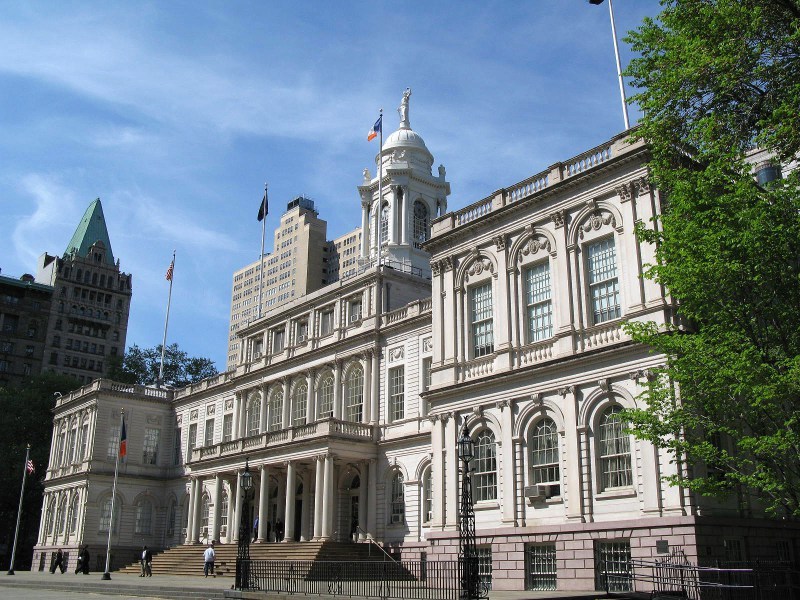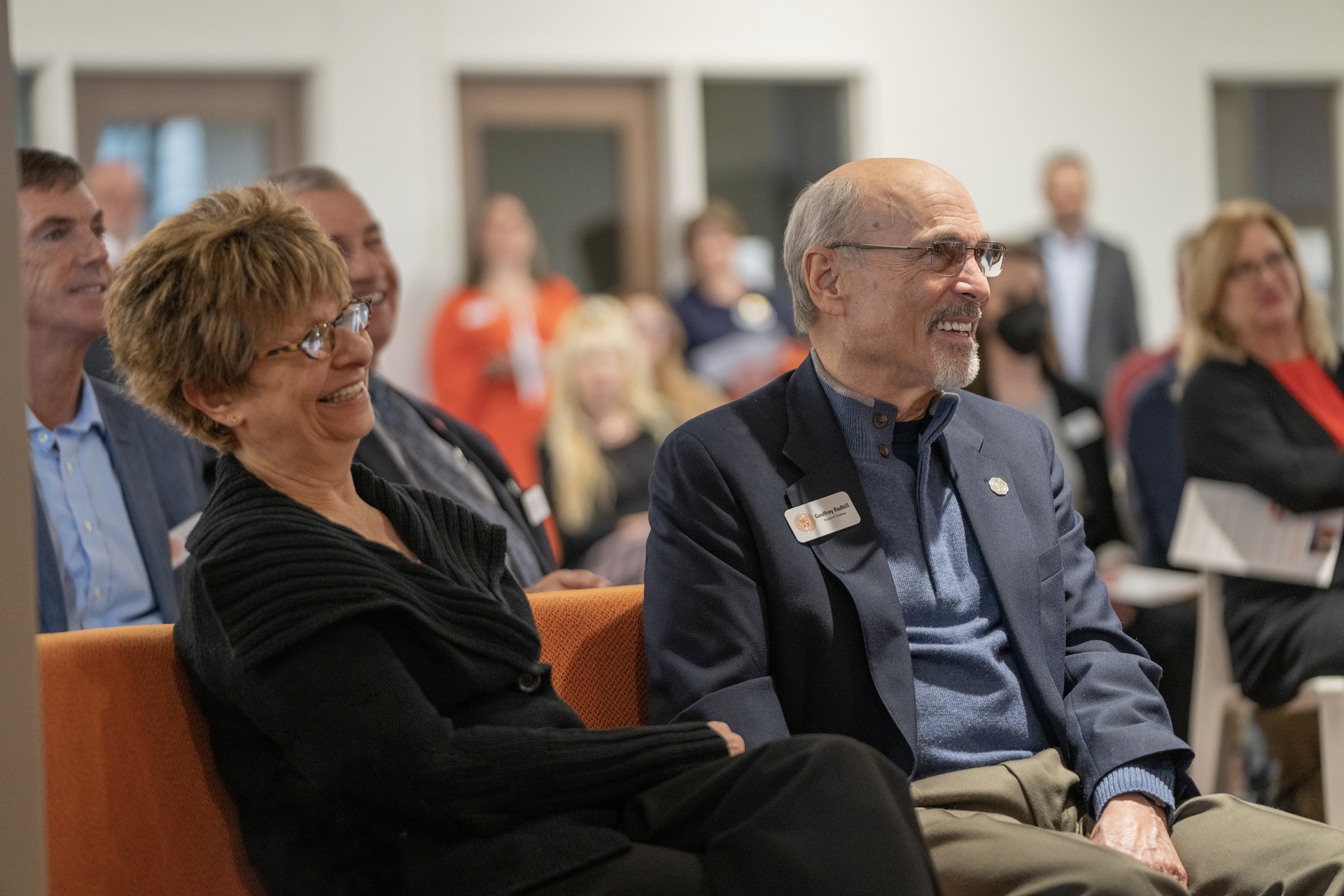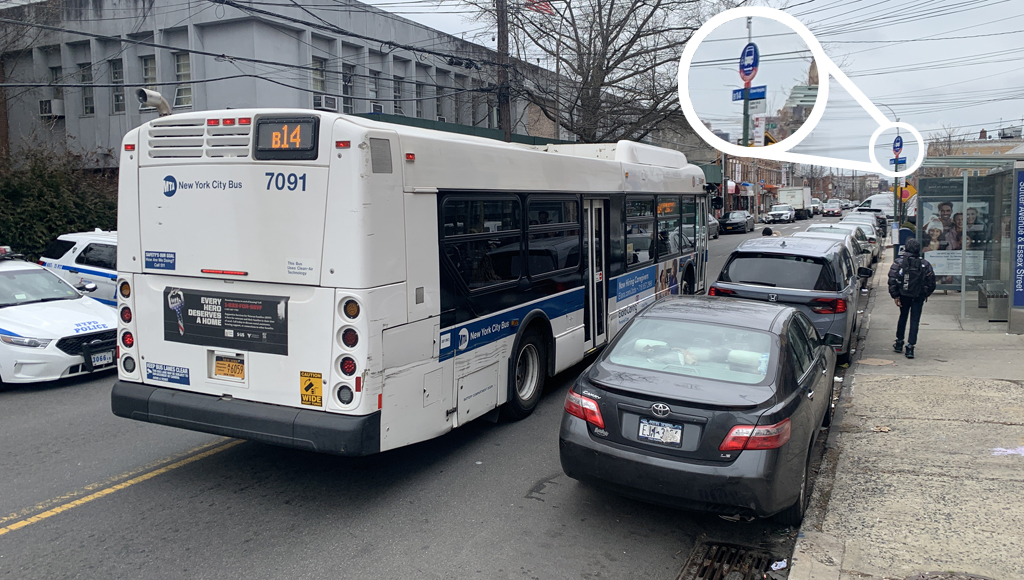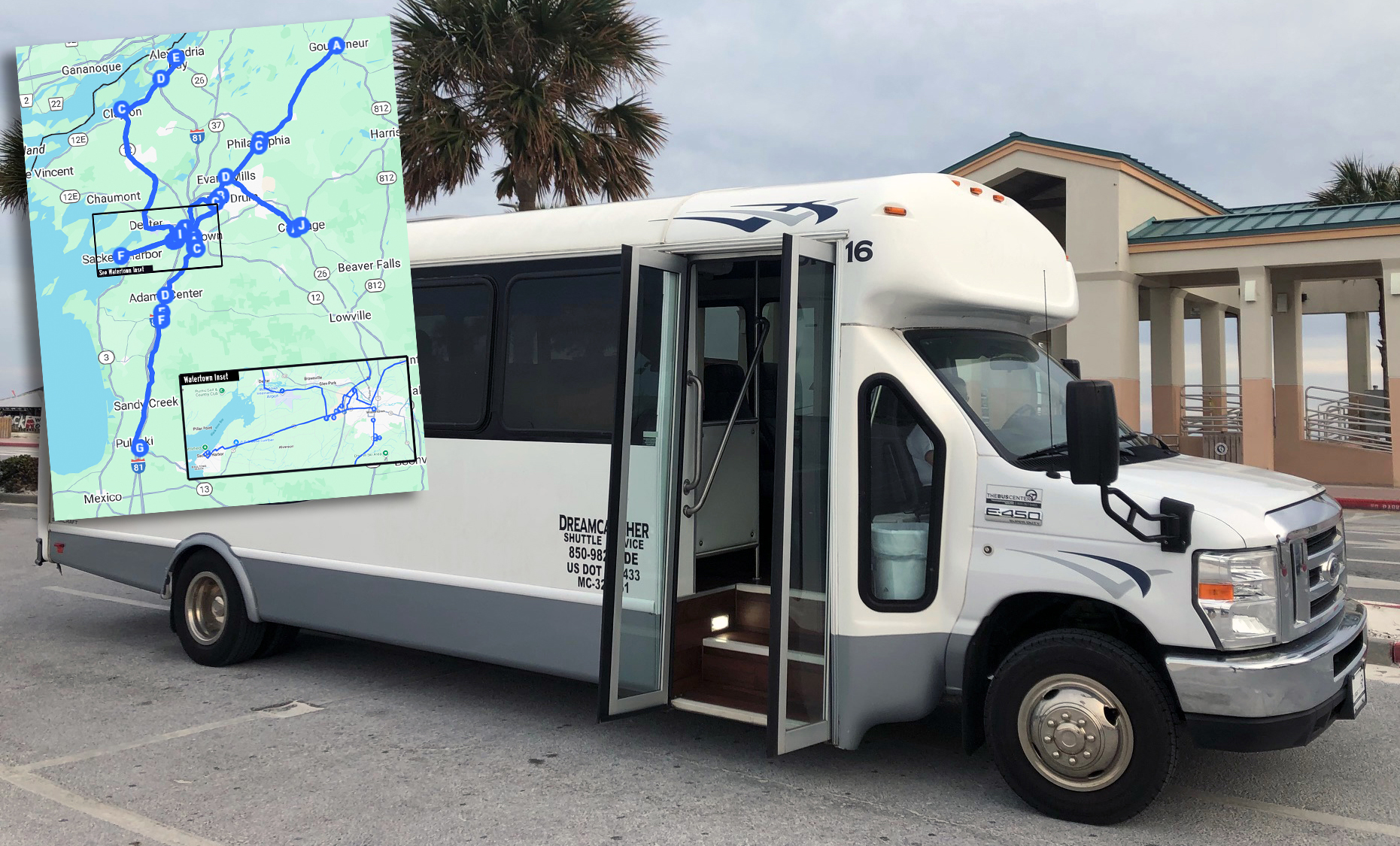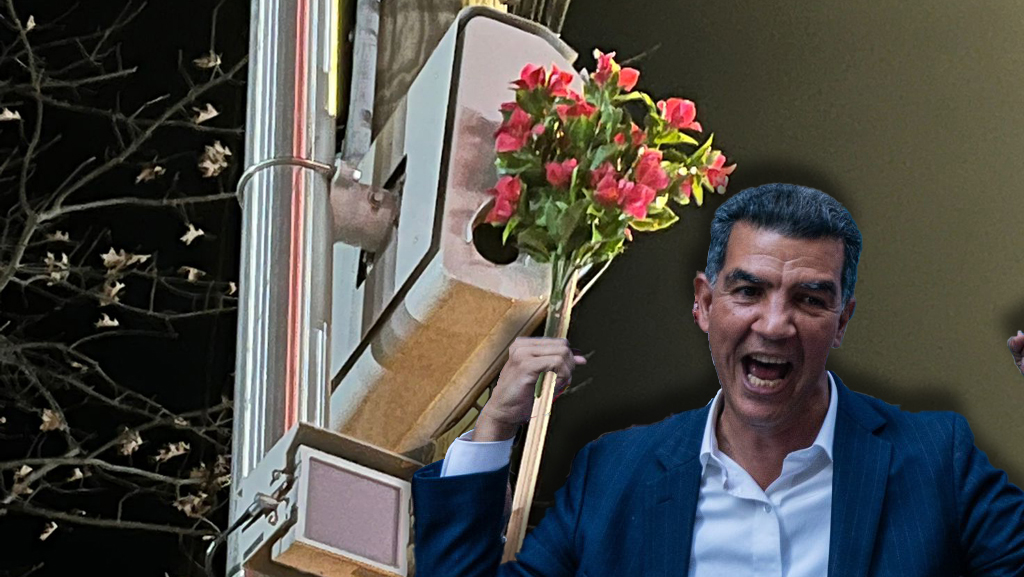Thursday night was the Super Bowl for transportation nerds, as a coalition of street safety and mass transit advocacy groups got eight mayoral candidates together and interrogated them on their transportation priorities should they occupy Gracie Mansion. There was good, there was bad, there wasn't really that much weird to be honest. Every candidate managed to have a standout moment and a fumble, which Streetsblog has been kind enough to go over for you here.
Shaun Donovan, the former Bloomberg and Obama official came out strong to start the night by talking about how the city's streets haven't been designed to get people out of cars and seemed to take a shot at Mayor de Blasio's insistence that enforcement is a hefty plank in Vision Zero and street safety. On the other hand, his attempt to rationalize ferries by saying he didn't care how much money the city spent on them made us wonder if he's been spending too much time on sea shanty TikTok.
Best answer: “The fundamental problem from my point of view is we have led too much with policing and enforcement and not enough with reimagining our streets for the 21st century. We're a 21st-century city with 20th-century streets. I would really focus on the infrastucture we need to calm traffic and slow traffic to make sure we are fundamentally making walking around the city, cycling around this city, with protected lanes and infrastucture that really does change the experience that makes it safer. And I will say, we have the potential at this moment with the Biden-Harris administration to get a significant increase in investment in infrastructure to make it possible to accelerate that work and re-envision our streets.”
Worst answer: “Fundamentally we need to change the way we plan and envision our city. We need real and comprehensive planning based on what I call 15-minute neighborhoods. We need to look at every neighborhood and make sure every New Yorker has real transportation alternatives within 15 minutes of their front door that get them to jobs, to schools, to their friends and neighborhoods quickly. So I do see ferries as having a critical role, and frankly I don't mind that we subsidize them given that we subsidize cars more than anything else by paying for roads and parking and so many other things in this city that are deeply subsidized. I think the question has to be, 'Are they equitably distributed? And where is there demand?' I was in Staten Island the other day, I was in the East Bronx, I know there is demand including in Black and brown communities. But we need to have a system that plans equitably and interconnects these modes. We need to make sure we have last-mile solutions for ferries, such as Citi Bike and other micro-mobility modes that allow us to create an integrated network.”
Dianne Morales, a non-profit housing executive running on people power, gave a measured answer on municipal control of the MTA that recognized the challenges behind the city taking over an agency with a $10 billion per year operating budget and a sprawling network of commuter trains and bridges. Hopefully certain other campaigns were taking notes. In an overall good night for Morales, her only stumble came when she pointed out that the city has better priorities to spend transportation money on than the ferries, but then didn't go all the way to say she'd turn the boats into an artificial reef.
Best answer: “I believe that we should over the long term move to municipal control of the subways and the buses, I think state control has meant that the suburbs and commuter trains have been prioritized over the city, where people are often entirely reliant on public transportation. I believe municipal control can shift that dynamic, we've really got to be deleagted an expanded array of taxing authority as well, we need the revenue as well as the responsibility. One of the ways we can do that is implementing congestion pricing quickly. I also think we need to be looking at metered parking and fees for using public roads and sidewalks, and ultimately I've been a big advocate for taxing the rich, for us to move forward and fix the subways. I think ultimately the goal should be New York City controlling the subway system.”
Worst answer: “I would not expand the ferry system. The reality of it is we have to prioritize our marginalized communities, not just in words but in fundings, and that includes public transportation and public transit. For too long folks who are struggling with iuncome issues and other disparities also have stuffled with transportation disparities and Apartheid. How we move in the city is inextricably linked to the rest of our lives, and we've got to prioritize funding the systems that people use. Let's start with the buses, which predominantrly are used by Black and brown folks, let's expand that and then let's focus on the subway system. I don't think the ferry system is something I would look to expand right now.”
Maya Wiley, a former lawyer for the de Blasio administration and chair of the Civilian Complaint Review Board, shined when she talked about buses, promising to fix commute times in the areas where bus riders currently have it the worst. But her promise of more bus lanes and bus rapid transit is going to have to compete with her long answer talking around how she'll approach community boards and veto power on street improvements, an answer that seemed to suggest she'll work to make everyone happy instead of pulling the trigger on improvements that will help people who need it.
Best answer: “We know from the data, let's call it: Black people in the city have the longest commutes of any group. But also Black, Latino, Asian all higher than White. Which is about segregated housing but also because we didn't invest in public transit in traditional communities of color. That has to change. We have to expand bus lanes, expand bus rapid transit. I will do that. But I will focus first on where commute times are the longest and to connect folks on where they have to get to and get home.”
Worst answer: “I'm running to the next mayor because I know what it means to create relationships and pull people together to solve problems. And that's what we have to do as a city and we have to do it in a way that reimagines and not just recover. And that means it's not really about community boards vs. not community boards, it's about all the community participation in problem solving. But one way we do that is we have to create the space where we're reimagining with shared principles and goals. And that means safety, making sure we all can get where we need to go effectively and efficiently. Far too many communities are taking far too long to get to work, they're usually low-income communities of color. The kinds of things that help us create alternatives to help us manage our environmental health. All these things include community boards, but also it's not about veto power because it can't just be about saying no to something that's going to deliver for communities. So it is engaging people, engaging them in planning, but it's engaging them in planning that uses all our tools to get us where we're going safely and in a way that brings down our asthma rates and gets us all what we need.”
Andrew Yang, the former test prep executive and entrepreneur currently leading the race (well, in polls), finally gave an answer on what he'd do about the specter of community boards haunting any forward momentum on bike lanes, bus lanes and pedestrian safety projects that impact drivers. And it was a good answer. But the candidate who pitched takin the MTA from Albany as an easy job trashed Vision Zero as an unattainable goal that should be shunted aside, an answer that left one transportation wag fuming that "Yang is wildly visionary but draws the line at saving lives?"
Best answer: “People know best what they need in their community. But the second thing is that right now it's very difficult to do things in New York City because there are groups that have the ability to say no. And one of the experiences I've had is I've been in a lot of communities discussing transportation plans, and I'm a cyclist and I suggested a bike lane as an addition, and there were people who reacted very very negatively to me — ‘This neighborhood doesn't need them.’ I thought to myself well that might be because you don't have a bike lane, because my experience is that the infrastructure drove my experience in a particular way. So there are at least certain aspects that I think we should aspire to as a city that should take community feedback into account very very heavily, particularly when they identify issues that no one else would know about. But I don't think having community boards veto some of these plans would be the right approach for certain citywide goals.”
Worst answer: “I want to say something that's going to be very very difficult to hear. The fact is that come the year 2024 we are almost certain to have someone die in a vehicle accident that year in New York City. The question is how many of those deaths will be deaths we could have prevented, we could have avoided with intelligent investment, with the right policies. That's what we should be focusing on. The fact is we are a city of over 8 million people with tens of thousands of vehicles coming through our city every day, and there are going to be a certain number of injuries and fatalities every given year even if we do everything right. So I would reframe Vision Zero as zero avoidable, preventable deaths because we failed to act and failed to invest. That is the standard we should be holding ourselves to, but we should be realistic about reducing injuries and fatalities to a level where we can look at and say we did everything in our power.”
Eric Adams, a former cop and State Senator before taking the helm as Brooklyn Borough President — where he has come under fire for letting his staff park on the public plaza outside his office — touted his long-time advocacy with Families for Safe Streets and Transportation Alternatives. But Adams’s answer on what the city should do on the crumbling Brooklyn-Queens Expressway triple cantilever, which runs through Brooklyn Heights and which experts say is in danger of collapsing within the next eight years, seemed to miss the mark.
Best answer: “I spent many days with the advocacy standing with the families long after cameras were gone. Helping them bury their loved ones. It's about really putting money where we need to do so and proper enforcement. And I’m going to be clear on that. As a police officer, I was in charge of traffic stats, and we took a serious approach to identifying those areas where you had traffic fatalities, and anyone who is in this business knows there are certain locations in this city that you can predict almost the number of accidents you have there based on the way the street designs are, the layout, based on the speeding, we need to apply that data to bringing down the numbers. Look at Ninth Street in Brooklyn as a similar location and so I’m going to use the technology, use the enforcement, use redesign to handle this problem.”
Worst answer: “There were some great designs and I followed this closely. The original idea was a terrible option. I believe we should take the entire region into account. A lot of focus was looking at how this would impact the Brooklyn Heights area when in fact, we should be looking at how it impacts going into Bay Ridge, Sunset Park, and also headed into the Williamsburg area as well. I would look at using the space for a park space, how do we rethink the project? There were some excellent ideas that I saw talking about bringing it to ground level, expanding of the roadway and using it for park space as well.”
Art Chang, a tech entrepreneur and occasional public sector troubleshooter, was clear that he believes community boards should not have much sway in whether necessary, often life-saving projects move forward or not. But his answer on the massive BQE project, while it hit all the right notes, still left out many details about what exactly he envisions for the triple cantilever — should it be torn down, covered with park land, or converted into a truck-only route? And while Chang is right that the highway is necessary for truck access and preserving the Brooklyn waterfront, he must be clearer about what those routes would look like so as not to further harm communities, like Sunset Park, already dealing with an influx of truck traffic.
Best answer: “Advisory for sure. There are so many issues beyond traffic safety and pedestrian safety that affect our overall city. The design of the streets, the future of the streets, it's the parks sanitation, the systems that run throughout the entire city that need to be decided at the citywide level: how are we going to distribute our homeless shelters, how are we going to distribute our low-income housing? If we’re going toward our vision of 15-minute communities how are we going to do that ? we need to be able to work with the community board but in an advisory capacity. And the other thing that came through loud and clear both in black lives matter protests and also recently in AAPI hate protests is the community calling for different kinds of engagement. It can’t just be with community boards, it has to be with different popular bottom up community representation.”
Worst answer: Chang did not have a bad answer, though it’s worth noting some vagueness in his comments about the “top-down” process by which DOT created its first plan for the reconstruction of the BQE. It’s not fully clear what specifically bothered Chang about that plan, which was hated by virtually everyone, but for many reasons. Chang did say it was made “without the right level of community involvement, and without thinking about the ancillary effects of things like construction and traffic routing,” but he also called the BQE, which some activists want torn down, “really a critical arterial roadway that does connect some of these major areas.” (We need to hear much more on this topic from all the candidates, though Comptroller Scott Stringer has put out a detailed plan of his own.)
Former Sanitation Commissioner Kathryn Garcia, who unveiled her own transportation plan last month for reimagining New York’s streetscapes, definitely has big and bold ideas for bike lanes and bus lanes — but also for cops, a combination that advocates say does not make anyone safer. Garcia, who said she doesn't support reducing the speed limit to 20 miles per hour, down from the current 25 mph, endorsed putting more armed officers on the subways.
Best answer: “I have committed to 250 miles of really protected bike lanes. It can't just be paint on the street, we have to physically separate the biker and the car because we can’t just depend on driver behavior to keep people safe. It’s not only about our commuters and our recreational bikers there are a tremendous number of essential workers who have been delivering your sushi and delivering your Amazon package on a bike, they are in those bike lanes they deserve to be protected. But this is about reimagining the public realm and how we are using our public spaces and ensuring our public spaces are for the public.”
Worst answer: “We need to make sure that we have enough officers so that people feel safe on the subway they don't today and that is why we still have low ridership. It would mean more right this moment.”
City Comptroller Scott Stringer, who also unveiled his own big-on-bus-lane transportation plan last month, had much to say on Mayor de Blasio’s much-scrutinized ferry system, for which taxpayers subsidize around $10 per ride, and which data show is ridden by higher-income New Yorkers. Stringer promised to rip up the contract on day one of his term, and instead funnel the subsidies into buses, though he didn’t say he would end the system altogether. But on community boards, Stringer fumbled in saying that while the civic panels are advisory, they city should attempt to get “consensus” among them in order to move projects forward. During the Bike New York forum earlier this month, Stringer similarly pledged that, as mayor, he would actually go to community boards and "build consensus around the table." It's hard to imagine the Mayor of New York City addressing a roomful of naysayers and not leaving for hours until he got a majority vote to approve a bike lane on a dangerous roadway where people have been killed.
Best answer: “I would rip up the mayor’s contract with the ferry operator right now. It is a $369 million hit to taxpayers. It’s great to be a ferry operator with Bill de Blasio’s because that ferry operators get to keep the concession. We actually buy the ferry operator the boats so the day the boat hits the water it loses its value everyday. I said to the mayor, ‘this is no way to run a ferry service’ and when you have more weekend traffic than you do week day, it’s clear there’s space for the ferries but the real investment in the city has to be to expand our bus network and other transportation alternatives. So the first thing I would do as mayor is come into EDC and bring in financial expert who understands how to do contracting and get better deals with our transportation network. But this has been a boondoggle like no other. I don't want to take away what the people have come to expect. I would rework the contract, certainly not provide boats and give concessions and just about the whole kit and caboodle to a favorite operator. What I’m going to do is come up with a comprehensive financial plan but ultimately the goal has to be transportation subsidy and expansion. I would drive into the buses and the bus lanes because I think that's a better bang for your buck, but I would keep the service of the communities right now.”
Worst answer: “I do think community boards and other organizations should be part of the larger conversation in the community, but the real leadership to get things done has to come from City Hall. You have to have a mayor and a mayoral team that knows how to engage communities and build consensus. We are talking about reimagining neighborhoods and its different components, we’re going to have to have that larger conversation and actually I look forward to it, it’s work I’ve done all my life.”
Fortunately, Stringer explained himself more fully: “I was a borough president that actually didn't make political appointments to community boards. I put together an independent screening panel, we got more people of color, got more diverse resumes, if we’re going to have a conversation, it can’t only be the same people making all the decisions. But that is how we build consensus. I don’t think we should shy away from engagement, but obviously there’s no veto power when it comes to land use and streetscape.”
Joycelyn Taylor, who runs a contracting company and would be the city’s first woman and first Black woman mayor, contradicted herself when she spoke about the need for community input for street-safety projects. Taylor said that community boards should have veto power when it comes to projects like bike lanes, but then later blamed the “bureaucracy” and “all of these conversations” that prevent things from getting done.
Best answer: “We have to stop having five-year plans for four-year terms. People want to see results, we've done all the data analysis that we need to about this situation. It's time to start implementing things so that people can see results in their communities. When it comes to things like putting in speed cameras, we get it done and we get it done in a timely, efficient fashion, and when it comes to this, we have to be able to do the same thing. So I think 2024, from my perspective is too far along, we have to look at already established best practices and utilize that as a means to be able to get this done quicker. We don’t have to wait until 2024, we know what the issues are, we know what the solutions are, we should just go ahead and implement them and get it done.”
Worst answer: “We have to stop thinking that everything in this city is one-size-fits-all, and that only the leadership in this city should have a say in what happens in this city. If you're paying attention to what's going on in this moment, people want to be heard and people want to be empowered and make decisions on things that will impact their lives and their communities. We have to utilize technology to give not just the community board, but communities at large, the opportunity to have a vote in what is going on in their community. If we can vote for American Idol why can't people in communities have a vote or a say in what happens with their community? The city is behind as it relates to technology. So not only from my perspective should they have an advisory role but they should have a veto role. It shouldn't be either or to me. They should be able to have an impact on what happens in their communities. We have to empower communities and give them resources that they need in order to be able to get things done more expeditiously, when we continue with all of this bureaucracy and all of these conversations from one level to the next ultimately nothing gets done and the term is over.”
